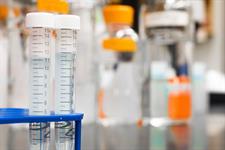The dramatic fall in charitable fundraising caused by the coronavirus outbreak could result in billions of pounds of investment in medical research being lost over the next seven years, new research shows.
Analysis by the think tank IPPR says that in a “reasonable worst-case scenario”, the drop in charity fundraising could lead to £4.1bn of medical research investment being lost between now and 2027.
This could result in a total of £7.8bn less investment in medical research over the same period when taking into account the funds that are leveraged in from the private sector by funds from charitable investment and lost investment from the adverse economic conditions.
A paper on the fundings, called Research at Risk and published today, says this would be equal to about £1 in every £10 spent on medical research, the IPPR warned.
The IPPR’s best-case scenario predicts £4.5bn fall in research and development investment over the next seven years, £2bn of which would be attributable to lost charity income.
The report says surveys have shown that fundraised income is expected to fall by about 37.5 per cent in the 2019/20 academic year and by more than 25 per cent in the following 12 months.
In response, the IPPR suggests the government creates a new three-year life sciences charity partnership fund worth about £900m.
Medical research charities would be free to use this fund as needed to maintain their research and development portfolio, the think tank suggested.
In return, they would be asked to document how they would help meet the government’s social priorities such as tackling health inequality.
Chris Thomas, senior health fellow at the IPPR and the lead author of the report, said medical research charities were the lifeblood of UK life sciences.
“It will only be to the detriment of all our health if we leave them – in their hour of need – on the proverbial crash cart,” he said.
“Their investment is crucial to discovering the medicines and technologies that might, one day, save your life. We urge the government to put in place measures to keep their vital work going.”
